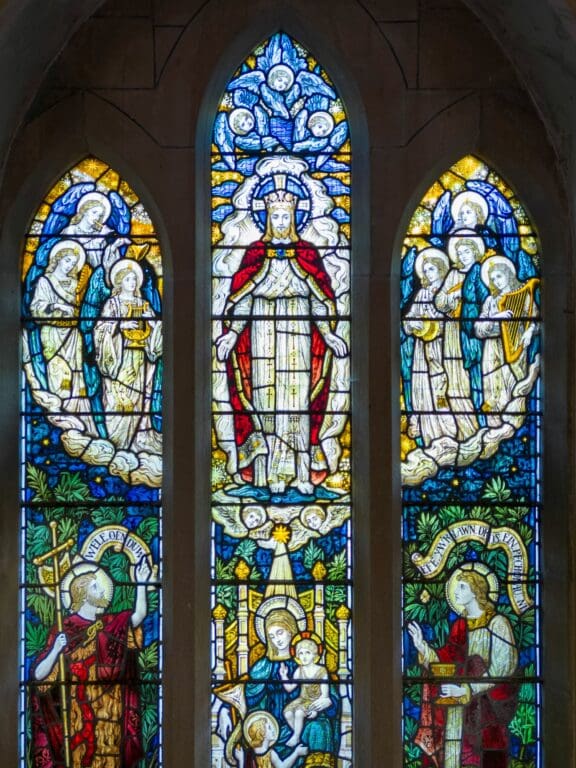
Open daily
OS grid reference
SH525387
what3words
jousting.churn.cobrasThis church is accessed via a narrow gate, just wide enough for a car, off the main road. It is hard to spot, so look out for two stone gate posts.
Please note that the latch sometimes sticks in wet weather, making the door difficult to open and please ensure that you close all gates behind yourself to protect the farmers’ livestock.
While the 1892 Gestiana records burials here from AD 730, the oldest part of the surviving building is the 12th-century nave, however, in architectural terms it is the extraordinary interior which makes it special.
St Cynhaearn’s feels like a complete late-Georgian estate church of 1832, although it did serve as the parish church for the broader area until Porthmadog provided itself with its own place of worship at the end of the 19th century.
The north transept, which dates from 1622 in fabric, is full of tiered pews delicately painted with the names of the estate owners who were entitled to sit in each. Immediately opposite the north transept is the full-blooded triple-decker pulpit, with a position for the priest delivering the sermon and a desk for those delivering the readings. To the west is a gallery, which is commanded by the Flight and Robson chamber organ, which was brought here from Tremadog church in 1854.
There are two excellent stained-glass windows both by Powell & Sons. The east window of 1899 depicts a nativity scene, whiles the two light window of 1906 in the north transept shows St Cynhaearn and St David.
Outside, the churchyard too is full of interest. Uniquely, it includes the grave of a black man known as ‘John Ystumllyn’ (or Jac Du/Jack Black) who was captured in Africa circa 1742 and brought to serve the Wynne family, whose Ystumllyn estate surrounded the church.
A carved harp in relief on a chest tomb marks the resting place of David Owen, harpist and composer, generally known as Dafydd y Garreg Wen (David of White Rock), the name of his farm at Ynyscynhaearn. The air of that name was composed on his deathbed in 1749 (he was just twenty-nine) and performed in the church at his funeral. It was sung again in 1923 by Mostyn Thomas, the first words in Welsh to be broadcast on the BBC, and it is performed at the annual Remembrance Service at the Cenotaph in Whitehall.




The buttons below link to church or local information on other websites.